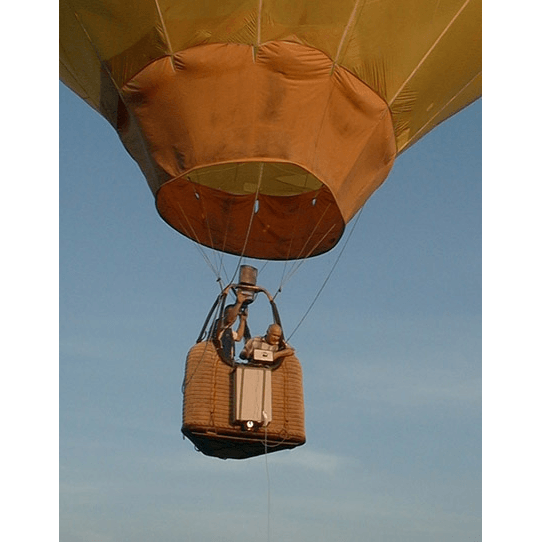Beginning of research

Employees of the University of Silesia have been interested in studies on atmosphere pollution, the dynamics of its spread, and its impact on the natural environment and human health for a long time. This research interest was expressed by environmental mineralogists, climatologists, geochemists and microbiologists, as well as physicists and chemists.
Photo 1. History of research balloon flights. Photo by: ULAC
The first studies of ozone concentration in the atmosphere using a private balloon were conducted by a physicist from the Institute of Physics at the University of Silesia, Krzysztof Ćwikiel, PhD (Photo 1 and 2), together with an academic from the Silesian University of Technology, pilot Witold Filus, PhD.
At the same time, atmospheric pollution was examined by environmental mineralogists, climatologists and geochemists from the University of Silesia (Prof. Janusz Janeczek; Mariola Jabłońska, PhD; Beata Smieja-Król, PhD; Mieczysław Leśniok, PhD; and Monika Fabiańska, PhD, DSc, Assoc. Prof. of the University of Silesia), who established cooperation with Prof. Bernard Grobety and his team from the University of Fribourg (Switzerland).
Photo 2. History of research balloon flights. Photo by: ULAC
Prof. Grobety conducted studies on pollution introduced into the atmosphere by volcanoes, using a manned balloon for this purpose.
The results of research conducted using a manned hot-air balloon were interesting enough to encourage scientists from the University of Silesia to undertake efforts to purchase a balloon and create an overhead mobile laboratory equipped with equipment for atmosphere studies.
The efforts were ultimately successful, and in 2016, thanks to financial support from the Regional Environmental and Water Management Fund in Katowice, the first Polish Overhead Mobile Laboratory placed in the basket of a manned hot-air balloon, known as ULAC, was established.








